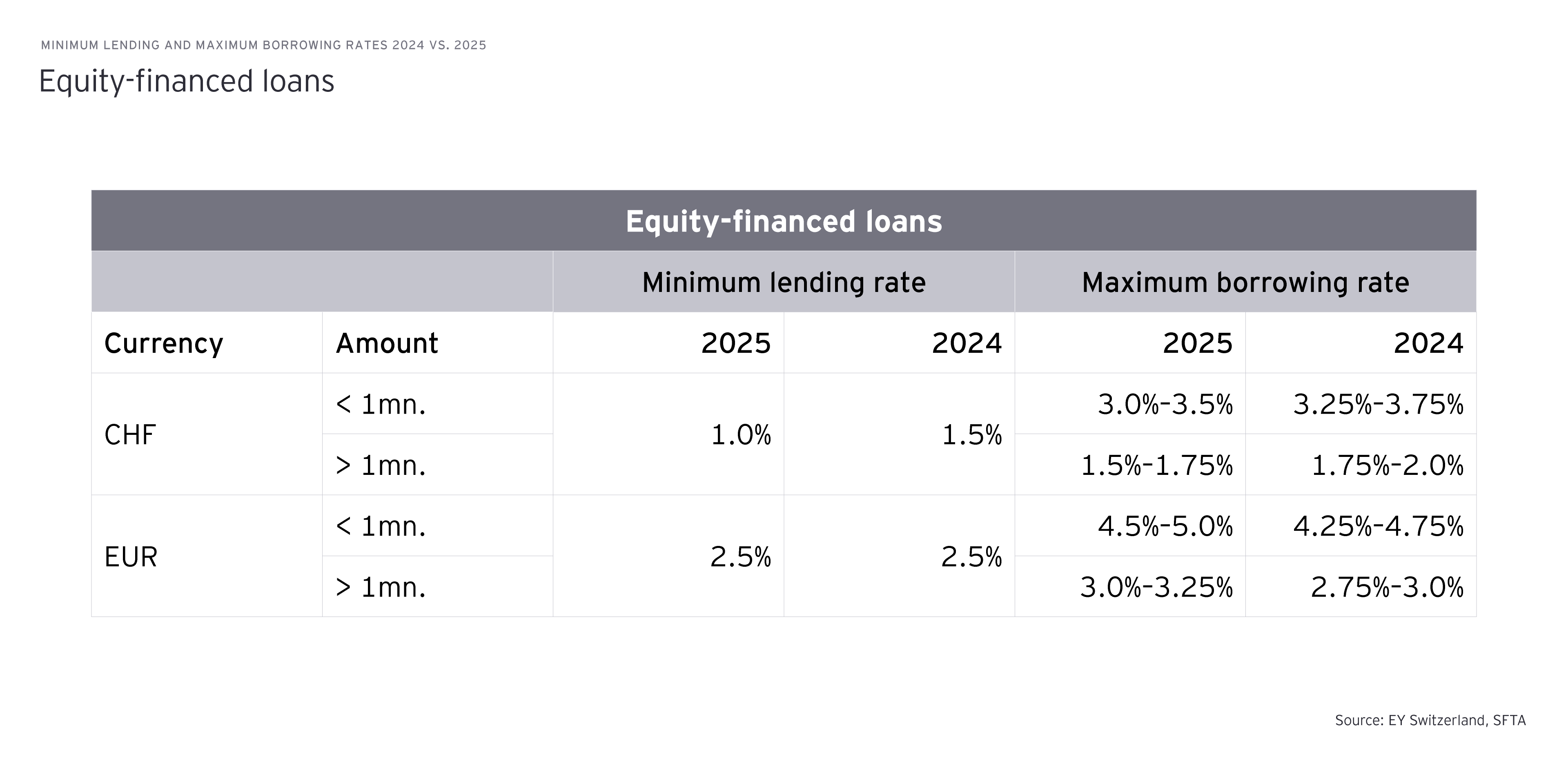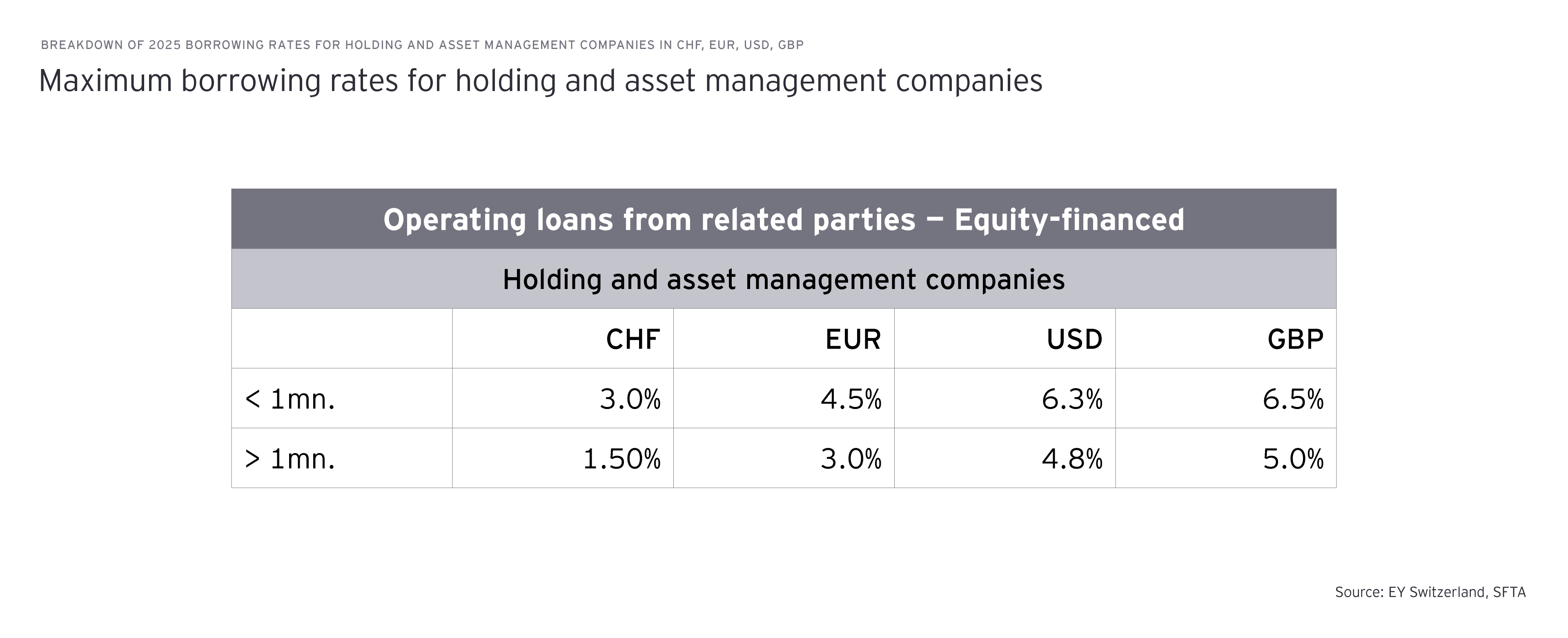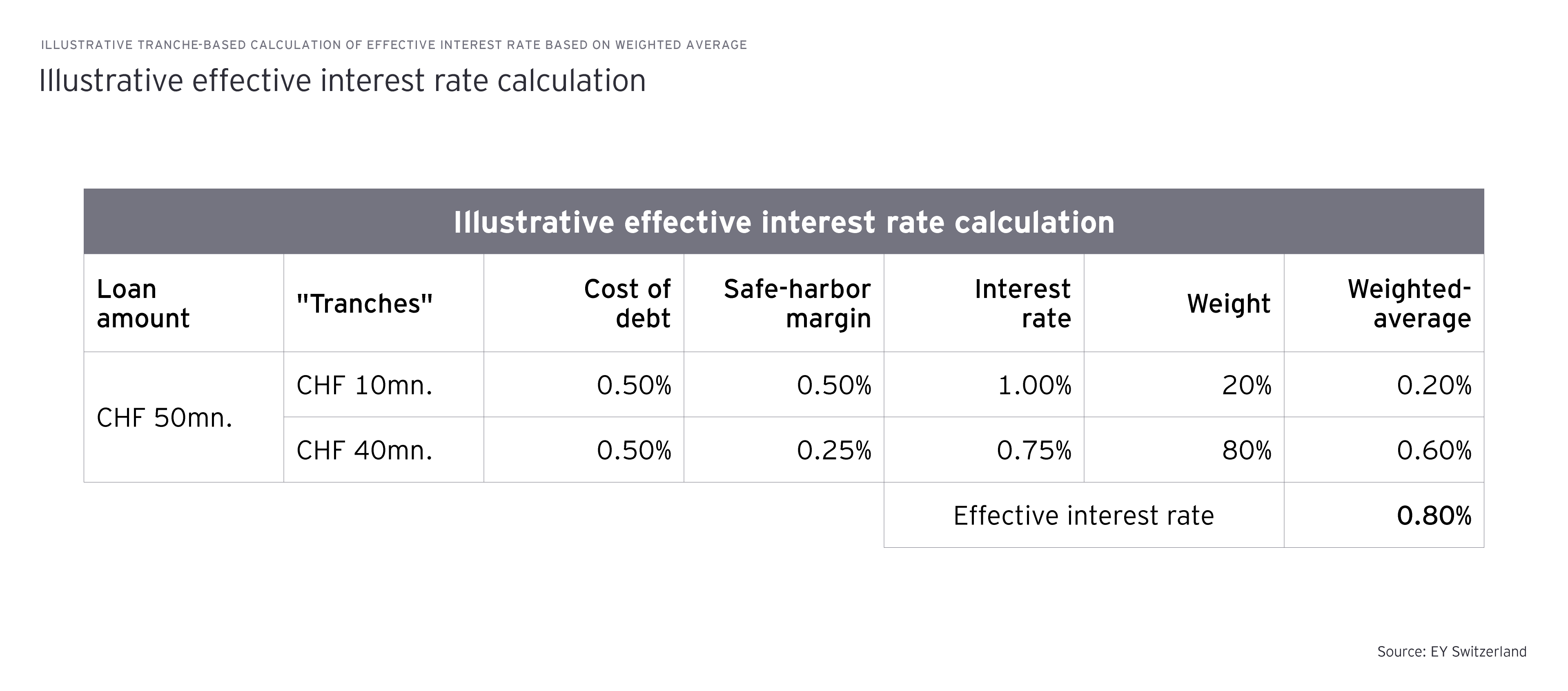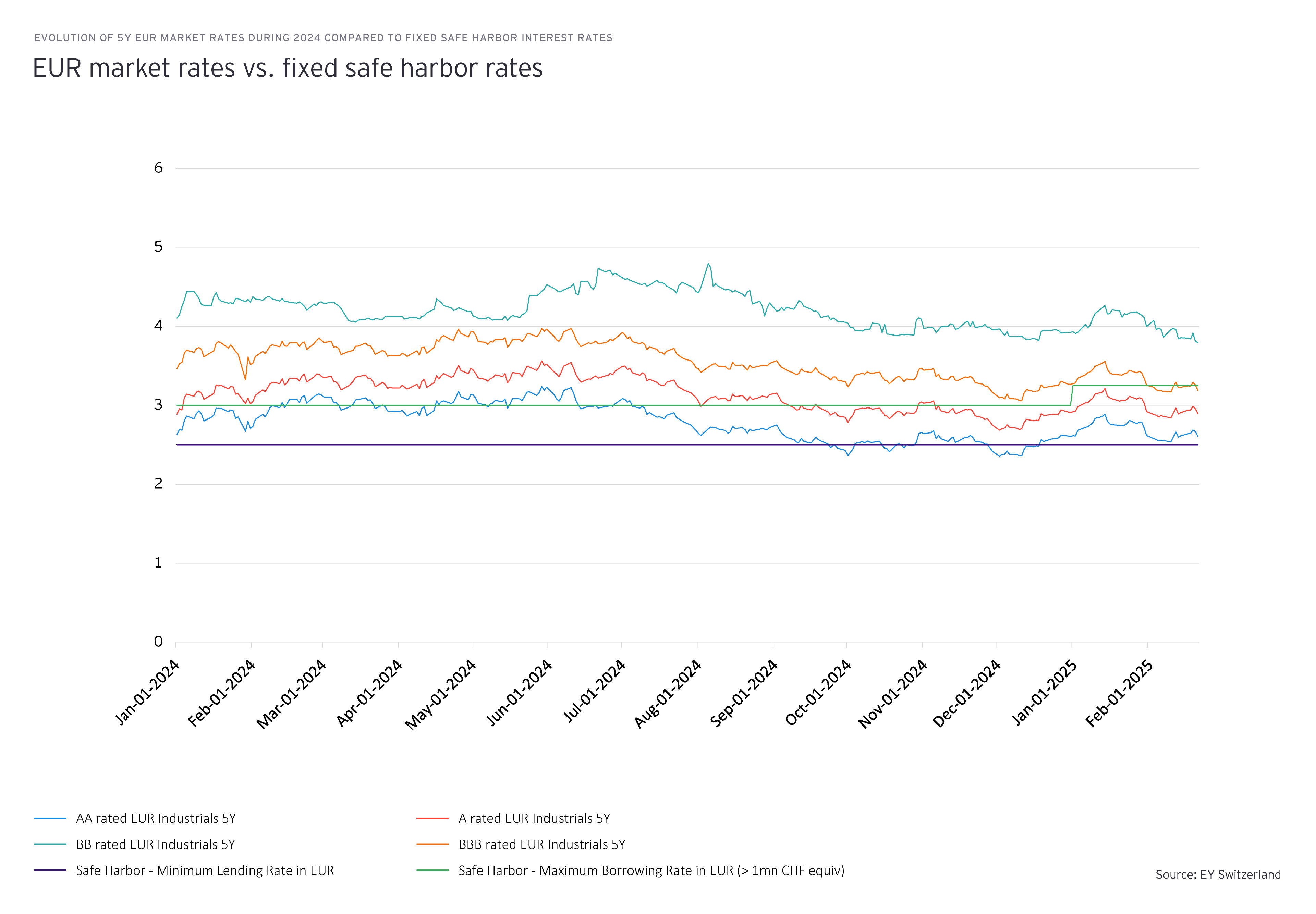On 27 and 28 January 2025, the Swiss Federal Tax Administration (SFTA) published Circular Letters No. 213 and 214 specifying the safe harbor interest rates applicable for 2025 for intercompany (IC) advances and intercompany loans denominated in Swiss francs (CHF) and in foreign currencies (see below for a more detailed analysis of the SFTA 2025 safe harbor rates).
Practical guidance: key advantages and limitations of the safe harbor interest rates
The primary advantage of safe harbor interest rates is that they allow taxpayers to price their intercompany financing arrangements without having to conduct complex debt pricing analyses in accordance with generally accepted principles for the Swiss tax authorities. This simplifies the burden of proof for taxpayers, providing them with general tax certainty regarding their transfer prices and minimizing the likelihood of challenges from the Swiss tax authorities, provided they can prove the intention to apply the safe harbor rates.
However, Swiss taxpayers should be aware of several limitations before relying on safe harbor interest rates:
Applicability to long-term loans only
Generally intended for long-term loans, the safe harbor interest rates are usually not accepted by the Swiss tax administration, both at cantonal and federal level, for loans with a term of less than 12 months. Recent court decisions are further shaping the interpretation of these rates. For example, the Administrative Court of the Canton of Zurich (SB.2023.00014) ruled in a cash pooling case that safe harbor interest rates are not applicable to claims with a maturity of less than 12 months. Therefore, for cash management activities such as cash pooling setups or stand-alone short-term intercompany financing, Swiss taxpayers should refer to market rates appropriate for the respective maturity rather than safe harbor rates.
Yearly applicability of safe harbor rates
It is important to note that safe harbor interest rates can only be used for the year for which they are published. For fixed-rate loans, these rates apply retroactively as of the beginning of the year in which the Circulars are issued and remain in effect until the end of the calendar year.
Binding nature from a Swiss perspective only
While safe harbor interest rates are a suitable approach for intercompany loans within Switzerland, they are only binding from a Swiss perspective for cross-border intercompany loans, provided the intention to apply safe harbor rates can be demonstrated. Therefore, it is advisable to conduct a market-based transfer pricing analysis and calculate an interest rate on that basis to ensure that the non-Swiss party can defend the respective rate toward its tax administration .
Relevance of safe harbor rates when market rates are applied
A recent ruling by the Swiss Supreme Court (“SC”) in case 9C_690/2022, dated July 2024, resulted in the SC disregarding a transfer pricing adjustment made by the Zurich Administrative Court based on safe harbor rates. The Supreme Court stated that if a taxpayer applies the arm’s length principle using market rates instead of safe harbor rates, the latter cannot be binding for the tax administration. This ruling clarified that safe harbor interest rates apply not only for direct and withholding tax purposes, but also for cantonal and municipal taxes. However, it also highlighted that safe harbor rates must be applied intentionally, and merely referring to them as reference to defend interest rates during specific years in the event of a tax audit is unlikely to be accepted by the Swiss tax authorities in the future. For further information please refer to brochure on the topic linked below.
In a contrasting decision, notably case 6B_90/2024, the tax administration challenged the interest rate internally established by the taxpayer, which was based on estimated market reference data. A subsequent transfer pricing analysis, aimed at justifying this interest rate, was rejected due to inadequate consideration of the loan’s economic purpose and type – a key factor alongside the reliance on foreign comparables rather than Swiss ones. Consequently, the cantonal tax administration proposed as a compromise an interest rate of 2.5%, consistent with safe harbor rates for real estate loans, which the taxpayer accepted. While there are numerous other relevant procedural and tax aspects to this case, it is clear from a transfer pricing perspective that a comparability analysis – considering the nature of the transactions and the terms and conditions at the outset (ex-ante analysis) – would have placed the taxpayer in a better position during subsequent inspections.
Both cases, 9C_690/2022 and 6B_90/2024, underscore the importance of adhering to the arm’s length principle in transfer pricing. They highlight the necessity for proper documentation and timely, comprehensive analyses, which are essential for substantiating the arm’s length nature of interest rates and mitigating disputes with tax authorities.
Creditworthiness not considered
Safe harbor interest rates are determined based on factors such as loan type (e.g., operating loan or real estate loan), amount (e.g., up to or beyond CHF 1 million or higher than CHF 10 million), currency (with 24 foreign-denominated interest rates available) and type of entity (e.g., holding company, manufacturing company). However, these rates do not account for key terms and conditions that significantly influence credit risk, such as creditworthiness of the borrower and maturity of the instrument.
A comparison of historical market rates and safe harbor interest rates reveals that there is not always a correlation between them, particularly for certain credit ratings and maturities. While safe harbor interest rates may align well with specific credit ratings, discrepancies can arise for others.
The Circular Letters indicate that interest rates deviating from the safe harbor guidelines may be acceptable if there is evidence demonstrating compliance with the arm’s length principle. In practice, the Swiss tax authorities typically accept these deviations when taxpayers provide supporting documentation. To substantiate this, it is essential to have appropriate transfer pricing analyses and relevant documentation readily available. The Swiss TP Guidance published in January 2024, along with the Q&As available on the SFTA website, offers comprehensive guidance for establishing the arm’s length nature of intercompany loans. For further information, read our related article.
Summary of 2025 SFTA safe harbor rates
The Swiss Federal Tax Administration distinguishes between equity-financed loans and debt-financed loans.
Equity financing
The table below sets out the minimum lending rates and maximum borrowing rates for equity-financed loans in CHF and EUR together with the rates applicable for 2024.














